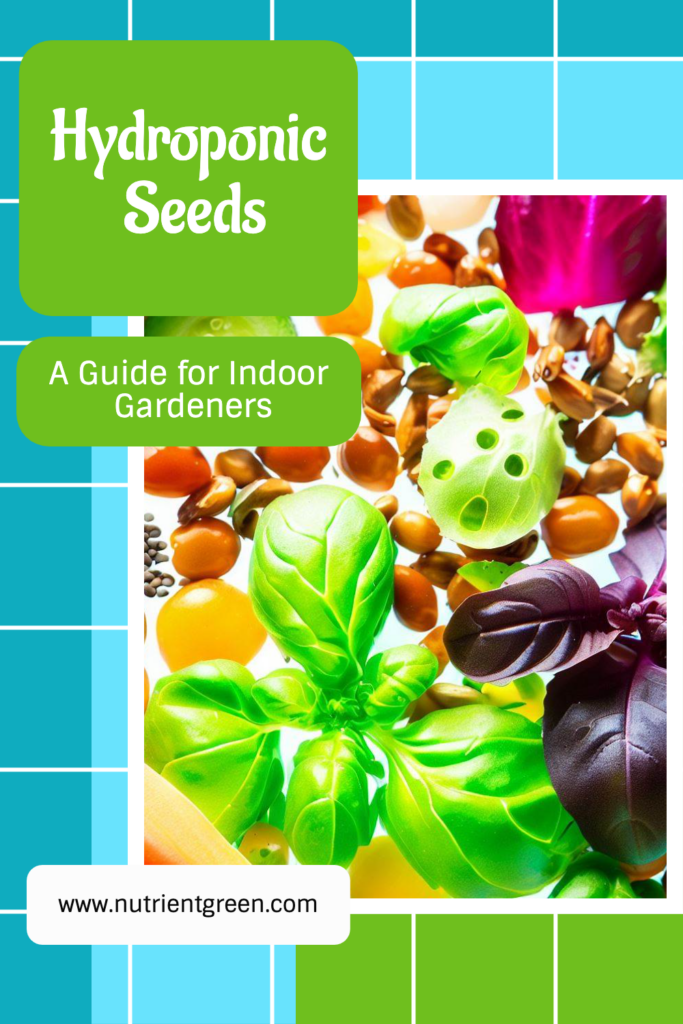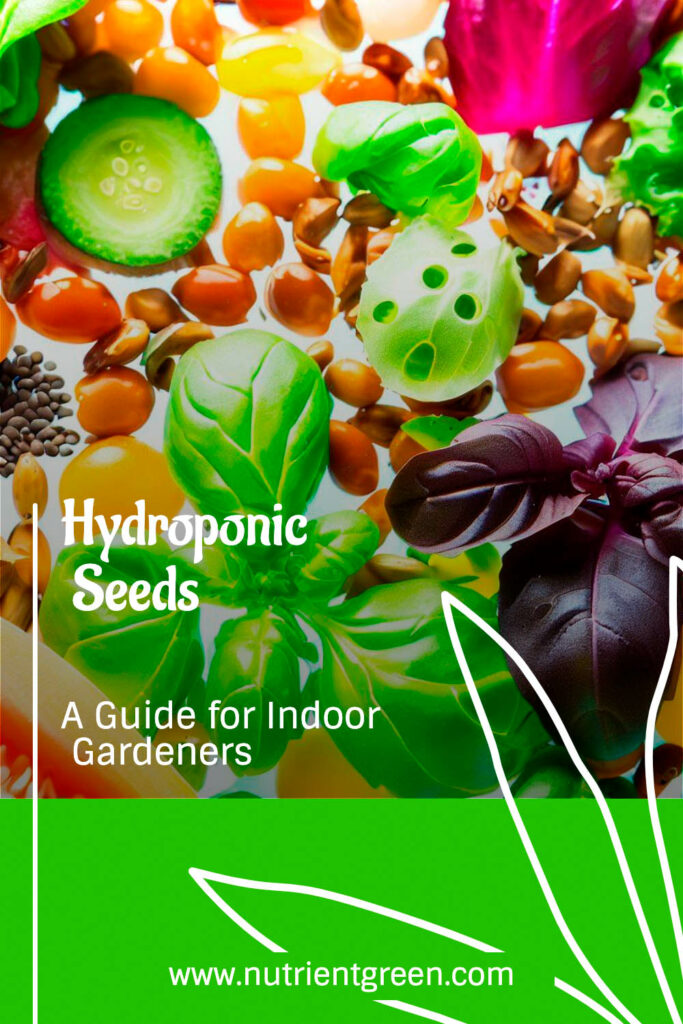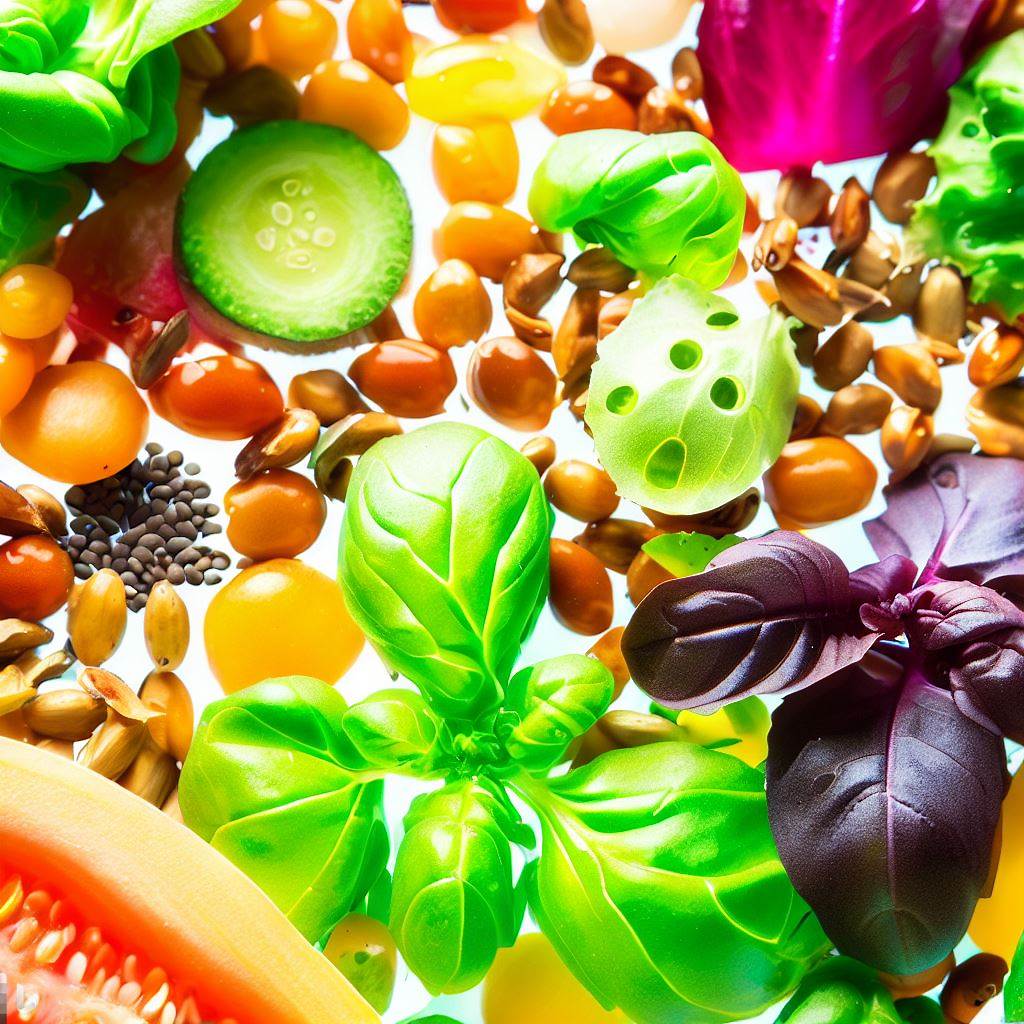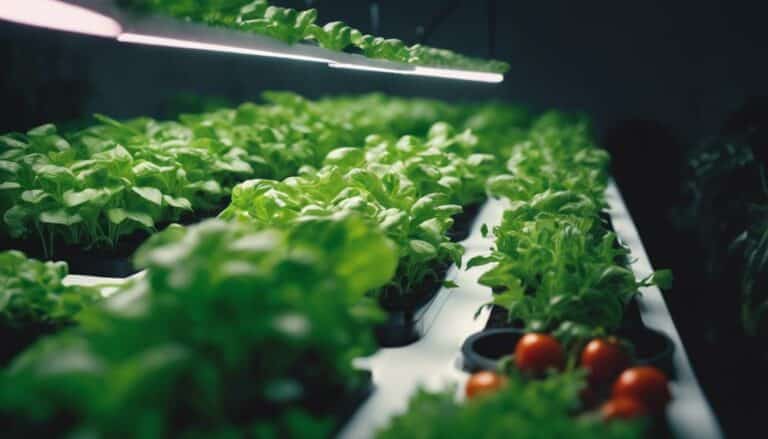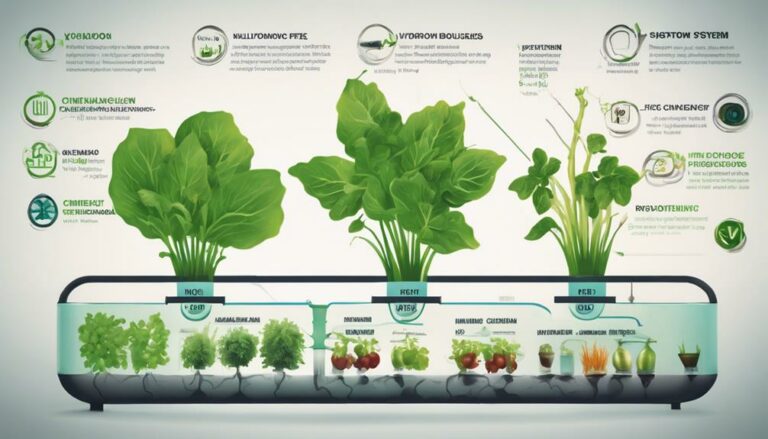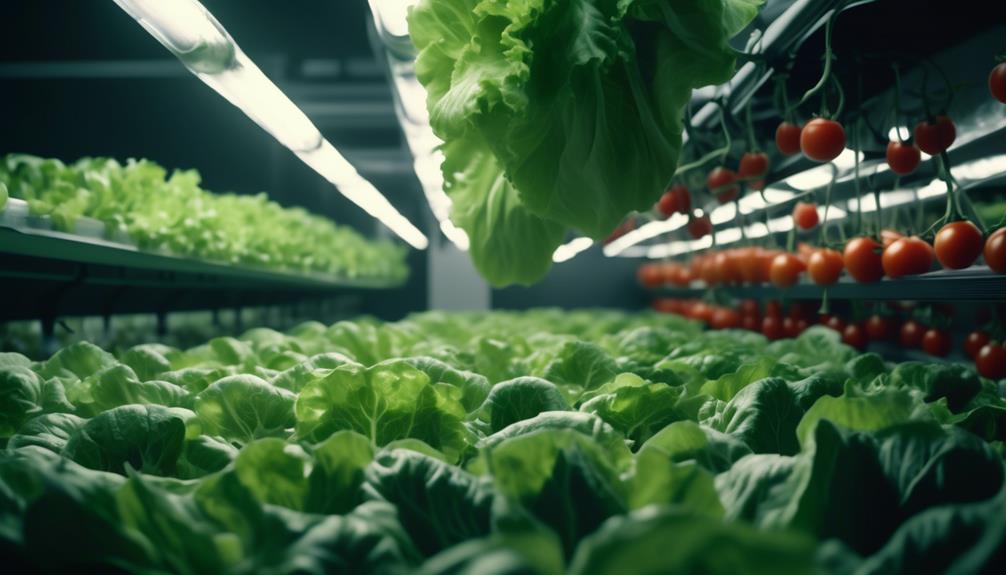Table of Contents
Are you interested in growing your own fresh and healthy food at home? Do you want to enjoy gardening all year round without worrying about soil, weather, or space? If so, you might want to try hydroponics, a method of growing plants in water instead of soil.
Hydroponics is a great way to grow a variety of crops indoors, from leafy greens and herbs to fruits and flowers. However, before you start your hydroponic journey, you need to choose the right seeds for your system. In this article, we will explain what hydroponic seeds are, why you should use them, how to select them, and how to germinate and grow them successfully.
What are hydroponic seeds and why use them?
Hydroponic seeds are simply seeds that are suitable for growing in a hydroponic system. A hydroponic system is a setup that delivers water and nutrients directly to the roots of the plants, without using any soil. There are different types of hydroponic systems, such as ebb and flow, drip, nutrient film technique (NFT), deep water culture (DWC), aeroponics, and aquaponics.
Hydroponic seeds are not different from regular seeds in terms of their genetics or appearance. However, they may have some advantages over regular seeds when it comes to hydroponic gardening. Here are some reasons why you should use hydroponic seeds for your indoor garden:
- Hydroponic seeds are usually more reliable and consistent than regular seeds. They have been tested and selected for their germination rate, vigor, and quality. They also have less chance of being contaminated by pathogens or pests that can harm your plants.
- Hydroponic seeds are usually more adaptable and resilient than regular seeds. They have been bred and conditioned to thrive in water-based environments, with minimal stress and shock. They also have better resistance to diseases and pests that can affect hydroponic plants.
- Hydroponic seeds are usually more productive and efficient than regular seeds. They have been optimized for their growth rate, yield, and flavor. They also have lower nutrient and water requirements than soil-grown plants, which means less waste and cost.
The benefits of hydroponic seeds
Using hydroponic seeds for your indoor garden can bring you many benefits, such as:
- You can grow a wider range of crops indoors, including exotic and rare varieties that may not be available or suitable for your climate or soil.
- You can grow your crops faster and harvest them sooner than soil-grown plants, thanks to the optimal delivery of water and nutrients to the roots.
- You can grow your crops healthier and tastier than soil-grown plants
- You can grow your crops cleaner and safer than soil-grown plants, as you can avoid the use of pesticides, herbicides, or fungicides that can harm your health and the environment.
- You can grow your crops more sustainably and eco-friendly than soil-grown plants, as you can save water, energy, and space, and reduce soil erosion and pollution.
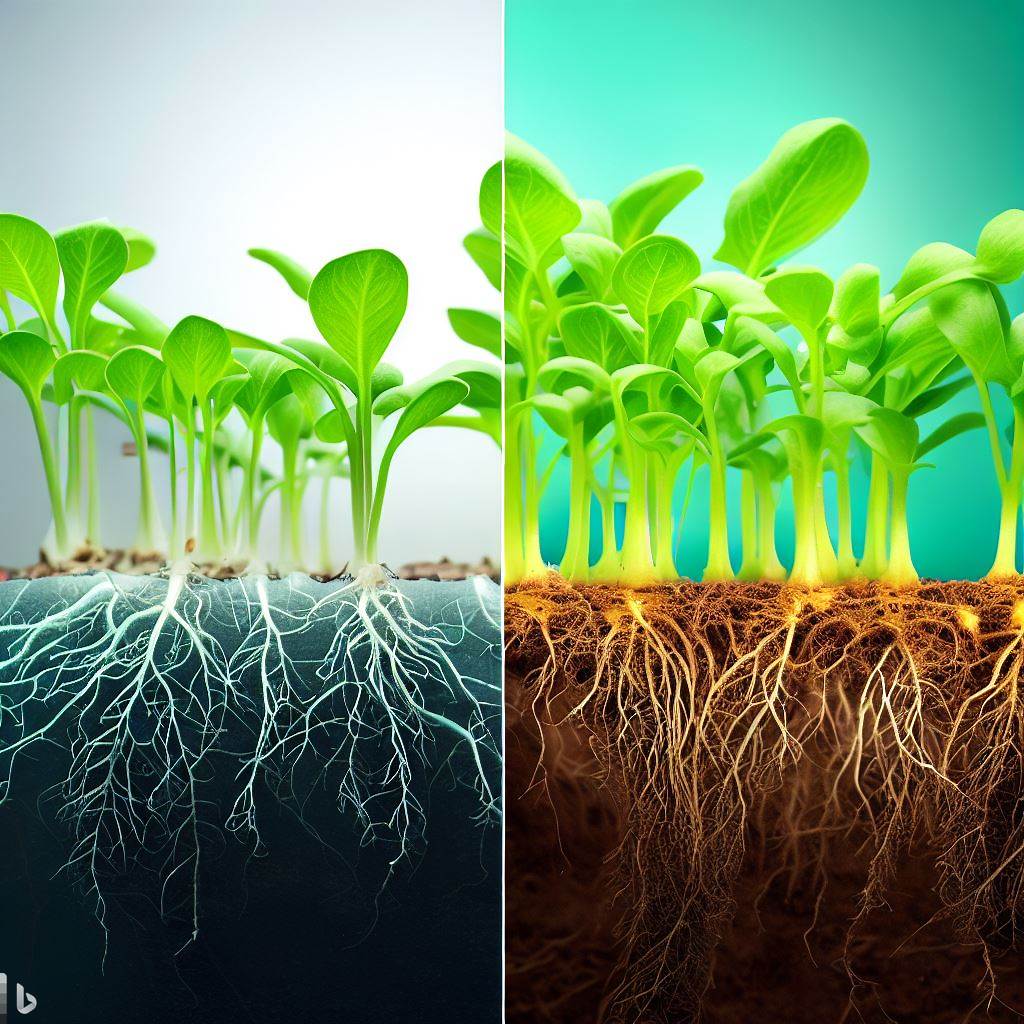
Hydroponic Seeds: The Good, the Bad, and the Funny
So, you’ve decided to give hydroponic seeds a go, huh? That’s awesome! But hold your horses because there are a few bumps on this gardening journey. Let’s take a closer look at these hurdles and how to tackle them like a pro in your indoor gardening escapades:
- The Hunt for Treasure: Hydroponic seeds are like the hidden gems of the gardening world. They can be a bit trickier to find and a tad pricier than regular seeds. It’s like searching for buried treasure, except you’re scrolling through online stores or browsing those fancy gardening shops. Warning: Your wallet might take a hit, but hey, good things come at a price!
- Talking to Seeds: Hydroponic seeds need some extra tender loving care. It’s like having a heart-to-heart chat with your plants. You’ll need to follow specific instructions for germinating and growing these seeds. It’s a bit like playing a game with a rulebook longer than a giraffe’s neck. Soaking, rinsing, sterilizing, sowing, transplanting—yeah, it’s a lot. But hey, think of it as being the ultimate plant whisperer. You’ve got the power!
- Roller Coaster Plant Ride: Hydroponic seeds bring their own set of challenges and risks. It’s like going on a thrilling roller coaster where you’re never quite sure what’s coming next. Your plants might decide to play hard to get and refuse to sprout. They might encounter troubles like root rot, nutrient issues, or even engage in a dance battle with algae. And let’s not forget the uninvited guests like bugs and fungal infections. It’s an adventure, my friend!
- Oopsie Daisy Moments: Ever heard of Murphy’s Law? Well, it seems to have a soft spot for hydroponics too. Just when you think everything is smooth sailing, bam! Power outage strikes! Equipment decides to throw a tantrum! Spills and leaks pop up out of nowhere! It’s like the universe testing your green thumb skills. But fear not, my friend. It’s a chance to flex your problem-solving muscles and show nature who’s boss!
By embracing these challenges with a can-do attitude and a sprinkle of humor, you’ll conquer the world of hydroponic seeds like a seasoned gardener. So gear up, my friend, and get ready to grow some epic indoor plants that will make your friends green with envy!
How to choose the best hydroponic seeds for your system?
Now that you know what hydroponic seeds are and why you should use them, you may wonder how to choose the best hydroponic seeds for your system. There are many factors that you need to consider when selecting hydroponic seeds, such as the type of seed, the size and shape of the plant, the growth rate and yield of the plant, the environmental conditions and nutrient requirements of the plant, and the disease and pest resistance of the plant.
The types of hydroponic seeds
One of the first things that you need to consider when choosing hydroponic seeds is the type of seed. There are different types of hydroponic seeds that have different characteristics and advantages. Here are some of the common types of hydroponic seeds that you can choose from:
Organic vs. non-organic seeds
Organic seeds are seeds that have been produced without the use of synthetic chemicals or genetically modified organisms (GMOs). They are certified by third-party organizations that verify their origin and quality. Organic seeds are preferred by many hydroponic gardeners who want to grow their crops naturally and organically.
Non-organic seeds are seeds that have been produced with the use of synthetic chemicals or GMOs. They are not certified by any organization and may have unknown or undesirable effects on your plants or health. Non-organic seeds are usually cheaper and more widely available than organic seeds.
Heirloom vs. hybrid seeds
Heirloom seeds are seeds that have been passed down from generation to generation without any crossbreeding or modification. They are usually old-fashioned varieties that have unique flavors and colors. Heirloom seeds are ideal for hydroponic gardeners who want to preserve the genetic diversity and heritage of their crops.
Hybrid seeds are seeds that have been created by crossbreeding two or more varieties of the same or different species. They are usually modern varieties that have improved traits such as yield, size, shape, color, flavor, disease resistance, etc. Hybrid seeds are suitable for hydroponic gardeners who want to grow high-quality and uniform crops.
Pelleted vs. non-pelleted seeds
Pelleted seeds are seeds that have been coated with a layer of inert material such as clay, gelatin, or starch. The coating makes the seeds larger, rounder, and smoother, which makes them easier to handle, sow, and germinate. Pelleted seeds are especially helpful for hydroponic gardeners who use small or fine seeds such as lettuce, basil, or parsley.
Non-pelleted seeds are seeds that have not been coated with any material. They retain their original size, shape, and texture, which may make them harder to handle, sow, and germinate. Non-pelleted seeds are more natural and authentic than pelleted seeds.
Table 1: Types of Hydroponic Systems for Seeds
| Type of Hydroponic System | Pros | Cons | Examples of Hydroponic Seeds |
|---|---|---|---|
| NFT | Efficient, water-saving, easy to maintain | Prone to clogging, root rot, power failure | Leafy greens, herbs, strawberries |
| Aeroponics | Water-saving, oxygen-rich, high-yielding | Expensive, complex, sensitive to nozzle failure | Leafy greens, herbs, tomatoes, peppers, cucumbers |
| Drip Systems | Versatile, customizable, easy to monitor | Wasteful, prone to salt buildup, require frequent cleaning | Tomatoes, peppers, cucumbers, melons, squash, beans, peas |
| Ebb and Flow | Simple, reliable, adaptable | Noisy, bulky, vulnerable to pump failure | Tomatoes, peppers, cucumbers, melons, squash, beans, peas, corn |
| DWC | Inexpensive, simple, fast-growing | Unstable, oxygen-deprived, susceptible to algae growth | Leafy greens, herbs, tomatoes, peppers, cucumbers |
| Wick Systems | Passive, cheap, easy to set up | Slow-growing, inconsistent, limited in plant choice | Leafy greens, herbs, microgreens |
The factors to consider when selecting hydroponic seeds
Another thing that you need to consider when choosing hydroponic seeds is the factor that affects the growth and performance of your plants. There are many factors that you need to take into account when selecting hydroponic seeds, such as:
The size and shape of the plants
The size and shape of the plants determine how much space and support they need in your hydroponic system. You need to choose hydroponic seeds that match the size and shape of your system and your available space. For example, if you have a small or vertical system, you may want to choose compact or dwarf varieties that do not grow too tall or wide. If you have a large or horizontal system, you may want to choose sprawling or climbing varieties that can fill up the space and provide more yield.
The growth rate and yield of the plants
The growth rate and yield of the plants determine how fast and how much you can harvest from your hydroponic system. You need to choose hydroponic seeds that match your expectations and preferences for your crops. For example, if you want to harvest frequently and abundantly, you may want to choose fast-growing and high-yielding varieties that can produce multiple crops in a short time. If you want to harvest occasionally and moderately, you may want to choose slow-growing and low-yielding varieties that can produce single crops in a long time.
The environmental conditions and nutrient requirements of the plants
The environmental conditions and nutrient requirements of the plants determine how well they can adapt and thrive in your hydroponic system. You need to choose hydroponic seeds that match the conditions and requirements of your system and your location. For example, if you have a warm and humid system, you should choose heat-tolerant and moisture-loving varieties that can withstand high temperatures and humidity. If you have a cool and dry system, you may want to choose cold-tolerant and drought-resistant varieties that can survive low temperatures and dryness.
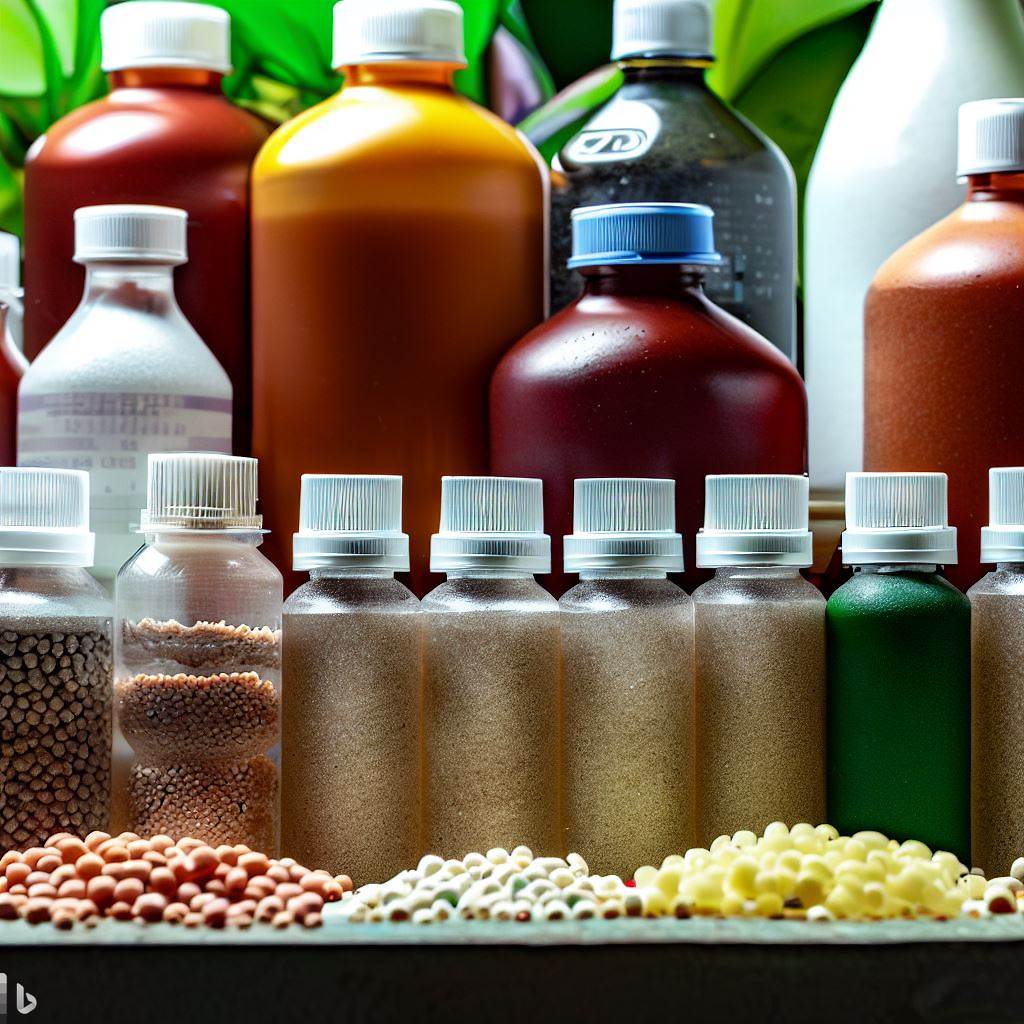
The disease and pest resistance of the plants
The disease and pest resistance of the plants determine how strong and healthy they can be in your hydroponic system. Choose hydroponic seeds that have high resistance to common diseases and pests that can affect hydroponic plants. For example, if you have a problem with fungal diseases such as powdery mildew or root rot, you can choose fungal-resistant varieties that can prevent or fight off these infections. If you have a problem with insect pests such as aphids or spider mites, you may want to select insect-resistant varieties that can repel or resist these attacks.
How to germinate and grow hydroponic seeds successfully?
Once you have chosen the best hydroponic seeds for your system, you need to germinate and grow them successfully. Germinating and growing hydroponic seeds are not very different from germinating and growing regular seeds, but they may require some extra steps and precautions. Here are some of the steps and tips that you need to follow when germinating and growing hydroponic seeds:
The steps to germinate hydroponic seeds
Germinating hydroponic seeds is the process of activating the seeds and making them sprout into seedlings. Germinating hydroponic seeds is usually easy and fast, as long as you provide the right conditions and materials. These are the steps for germinating hydroponic seeds:
Prepare the seeds and the growing medium
The first step is to prepare the seeds and the growing medium that you will use for germination. The growing medium is the material that will hold the seeds and provide them with moisture and air. There are different types of growing mediums that you can use for germination, such as rockwool cubes, peat pellets, coco coir, perlite, vermiculite, etc. Always select a growing medium that is sterile, inert, porous, absorbent, and compatible with your hydroponic system.
To prepare the seeds, you soak them in water for a few hours or overnight, depending on the type and size of the seeds. This will help them absorb water and soften their shells, which will make them easier to germinate. Remember to rinse them with clean water to remove any dirt or debris that may hinder their germination.
For preparing the growing medium, you need to soak it in water for a few minutes or hours, depending on the type and size of the medium. This will help it absorb water and expand to its full size and shape. You can also sterilize it with boiling water or hydrogen peroxide to kill any pathogens or pests that may harm your seeds.
Sow the seeds and provide moisture and warmth
The second step is to sow the seeds and provide them with moisture and warmth. Moisture and warmth are the two most important factors that affect the germination of hydroponic seeds. Sow the seeds at the right depth and spacing in the growing medium, and keep them moist and warm until they sprout.
To sow the seeds, make small holes or indentations in the growing medium, about 1/4 to 1/2 inch deep, depending on the size of the seeds. Then place one or two seeds in each hole or indentation, and cover them lightly with some of the growing medium. Space the seeds about 1 to 2 inches apart, depending on the size and shape of the plants.
Water the seeds gently and regularly, to provide moisture and warmth, using a spray bottle or a mister. You need to keep the growing medium moist but not soggy, as too much water can cause rotting or drowning of the seeds. Place the seeds in a warm and dark place, such as a propagator, a heating mat, or a cupboard. Keep the temperature between 70°F and 85°F, depending on the type of seeds.
Table 2: Typical germination time and temperature ranges for various types of hydroponic seeds:
| Hydroponic Plant | Seed Name | Germination Time (days) | Optimal Temperature Range (ºF) |
|---|---|---|---|
| Basil | Basil | 5-10 | 70-90 |
| Bok Choy | Bok Choy | 4-7 | 50-80 |
| Kale | Kale | 5-10 | 60-75 |
| Mint | Mint | 12-16 | 65-75 |
| Oregano | Oregano | 7-14 | 65-70 |
| Parsley | Parsley | 9-21 | 65-85 |
| Rosemary | Rosemary | 14-21 | 70-80 |
| Sage | Sage | 10-21 | 60-70 |
| Thyme | Thyme | 8-20 | 65-75 |
| Arugula | Arugula | 3-7 | 45-65 |
| Chives | Chives | 6-16 | 60-70 |
| Cilantro | Cilantro | 7-10 | 55-70 |
| Dill | Dill | 7-14 | 60-70 |
| Lettuce | Lettuce | 2-3 | 60-75 |
| Spinach | Spinach | 5-9 | 65-75 |
These are general guidelines and the germination time and temperature can vary depending on the specific strain of the seed and the hydroponic system being used.
Monitor the germination process and transplant the seedlings
The third step is to monitor the germination process and transplant the seedlings. Germination is the process of sprouting of seeds into seedlings. Germination can take anywhere from a few days to a few weeks, depending on the type and quality of the seeds. Monitor the germination process and transplant the seedlings when they are ready.
To monitor the germination process, check on the seeds daily and look for signs of sprouting. You need to look for small white roots emerging from the seeds, followed by green shoots or cotyledons (the first leaves). Also watch out for any problems or issues that may occur during germination, such as mold, algae, fungus gnats, etc. Remove any affected seeds or growing mediums and treat them accordingly.
To transplant the seedlings, move them from the growing medium to the hydroponic system. Transplant the seedlings when they have developed their first true leaves (the second set of leaves), which usually happens after one or two weeks of germination. Be careful and gentle when transplanting the seedlings, as they are fragile and delicate at this stage.
The tips to grow hydroponic seeds into healthy plants
Growing hydroponic seeds into healthy plants is the process of nurturing and maintaining the plants until they reach maturity and produce crops. Growing hydroponic seeds into healthy plants is usually easy and fun, as long as you provide the right conditions and care. Here are some tips to follow when growing hydroponic seeds into healthy plants:
Provide adequate light and air circulation
Light and air circulation are two essential factors affecting hydroponic plants’ growth and health. Provide adequate light and air circulation for your plants to photosynthesize, respire, transpire, and prevent diseases and pests.
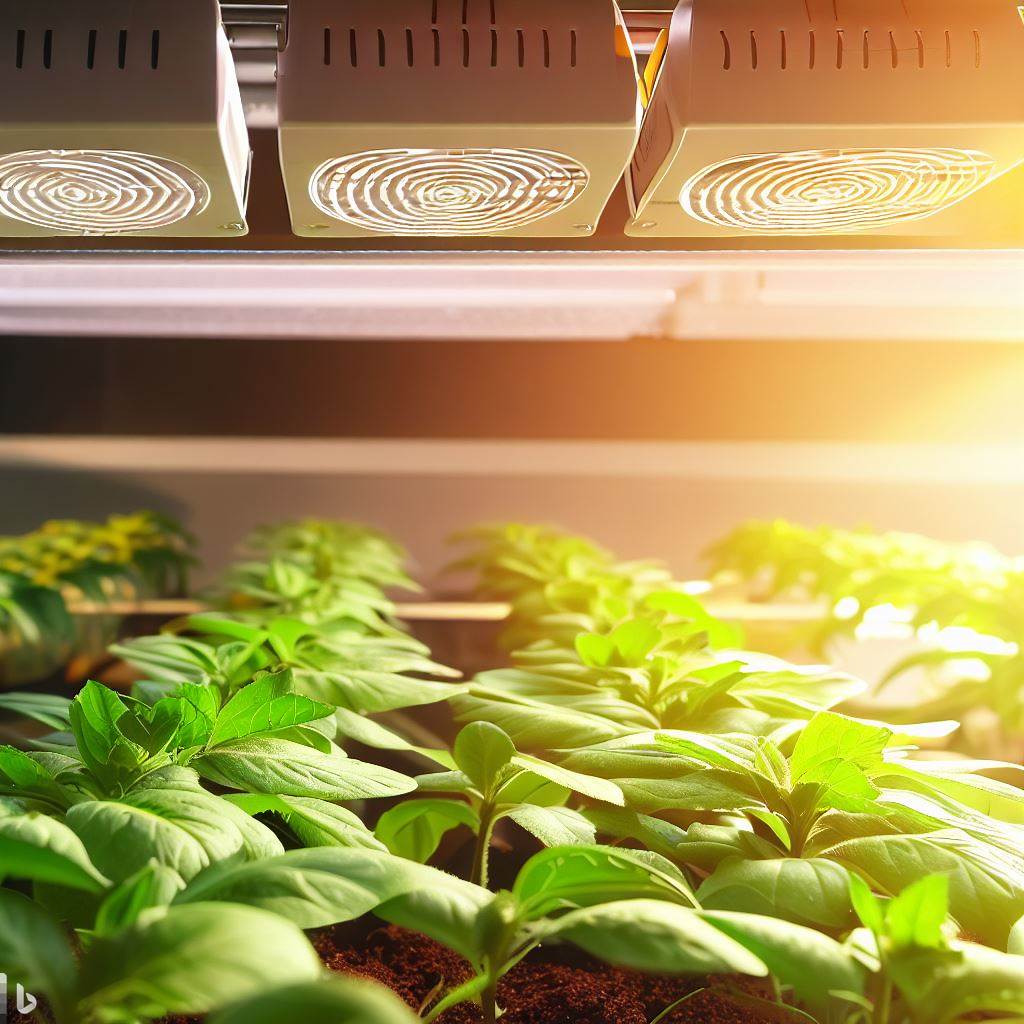
To provide light, expose your plants to natural or artificial light sources that can provide them with the appropriate intensity, duration, and spectrum of light. Choose a light source that matches the light requirements of your plants and your space. There are different types of light sources that you can use for hydroponics, such as sunlight, fluorescent lights, LED lights, high-pressure sodium (HPS) lights, metal halide (MH) lights, etc. Place the light source above the plants and adjust the distance and angle as needed. You also need to set a timer or a controller to turn the light on and off according to the photoperiod of your plants. Provide your plants with 12 to 18 hours of light per day, depending on the type and stage of the plants.
To provide air circulation, ventilate your plants with fresh and moving air that can provide them with oxygen and carbon dioxide. Prevent stagnant and humid air that can cause mold and mildew. Use fans or blowers that can create a gentle breeze around your plants and your hydroponic system. Place the fans or blowers near the plants and adjust the speed and direction as needed. You could open windows or doors that can allow fresh air to enter and exit your growing area. Always provide your plants with constant air circulation throughout the day and night.
Adjust the pH and EC levels of the nutrient solution
pH and EC are two important parameters that affect the availability and uptake of nutrients by hydroponic plants. pH is a measure of how acidic or alkaline a solution is, while EC is a measure of how electrically conductive a solution is. Adjust the pH and EC levels of the nutrient solution to ensure that your plants get the optimal amount and type of nutrients they need.
To adjust the pH level, you can use a pH meter or a pH test kit to measure the acidity or alkalinity of the nutrient solution. Ensure to keep the pH level between 5.5 and 6.5, depending on the type of plant. If the pH level is too high (above 7), you need to lower it by adding an acid such as phosphoric acid or citric acid. If the pH level is too low (below 5), raise it by adding a base such as potassium hydroxide or sodium bicarbonate.
Table 3: The optimal pH and EC ranges for hydroponic seeds:
| Plant Name | Seed Name | Optimal pH Range | Optimal EC Range |
|---|---|---|---|
| Lettuce | Lettuce | 5.5-6.5 | 1.2-2.2 |
| Tomatoes | Tomato | 5.5-6.5 | 2.2-3.2 |
| Cucumbers | Cucumber | 5.5-6.0 | 2.2-2.8 |
| Basil | Basil | 5.5-6.5 | 1.2-1.8 |
| Strawberries | Strawberry | 5.5-6.5 | 1.2-1.8 |
| Peppers | Pepper | 5.5-6.5 | 1.8-2.8 |
| Spinach | Spinach | 6.0-7.0 | 1.2-2.0 |
| Kale | Kale | 6.0-7.0 | 1.4-2.4 |
| Swiss Chard | Swiss Chard | 6.0-7.0 | 1.6-2.6 |
| Bok Choy | Bok Choy | 5.8-6.8 | 1.6-2.6 |
| Herbs (e.g., mint, parsley, oregano) | Herb Seeds | 5.5-6.5 | 1.2-2.2 |
| Microgreens (e.g., broccoli, radish) | Microgreen Seeds | 5.5-6.5 | 1.0-1.6 |
| Beans (e.g., green beans, snow peas) | Bean Seeds | 6.0-7.0 | 1.8-2.6 |
| Strawberries (e.g., everbearing varieties) | Strawberry Seeds | 5.5-6.5 | 1.2-1.8 |
| Herbs (e.g., mint, parsley, oregano) | Herb Seeds | 5.5-6.5 | 1.2-2.2 |
To adjust the EC level, use an EC meter or an EC test kit to measure the electrical conductivity of the nutrient solution. Always keep the EC level between 1.0 and 2.0 mS/cm, depending on the type and stage of the plants. If the EC level is too high (above 2.5), you need to lower it by adding more water or changing the nutrient solution. If the EC level is too low (below 0.5), raise it by adding more nutrients or changing the nutrient solution.
Check and adjust the pH and EC levels of the nutrient solution at least once a week, or more often if you notice any signs of nutrient deficiency or toxicity in your plants.
Prune and train the plants as needed
Pruning and training are two techniques that can help you shape and control the growth and development of your hydroponic plants. Pruning is the process of cutting off unwanted or excess parts of the plants, such as leaves, stems, branches, flowers, or fruits. Training is the process of bending or tying the parts of the plants to a desired direction or position. You need to prune and train your plants as needed to improve their health, appearance, and yield.
To prune your plants, use a sharp and sterile pair of scissors or pruners to cut off the parts that you want to remove. You need to prune your plants for various reasons, such as:
- To remove dead, diseased, or damaged parts that can attract pests or pathogens.
- To remove lower or older leaves that can block light or air circulation.
- To remove suckers or side shoots that can divert energy from the main stem or branch.
- To remove flowers or fruits that are not desired or mature enough.
- To thin out dense or overcrowded parts that can reduce light penetration or air circulation.
To train your plants, use a soft and flexible material such as string, wire, or tape to bend or tie the parts that you want to move. You need to train your plants for various reasons, such as:
- To support weak or heavy parts that can break or sag under their own weight.
- To spread out or lift up parts that can improve light exposure or air circulation.
- To direct or restrict parts that can fit into your available space or system.
- To shape or style parts that can enhance the appearance or yield of your plants.
Prune and train your plants regularly and gently, as they grow and develop. Avoid over-pruning or over-training your plants, as this can stress or damage them.
Harvest and enjoy your crops
Harvesting and enjoying your crops is the final and most rewarding step of growing hydroponic seeds into healthy plants. Harvesting is the process of picking or cutting off the edible or usable parts of your plants, such as leaves, stems, flowers, fruits, etc. Enjoying is the process of consuming or utilizing the harvested parts of your plants, such as eating, cooking, preserving, selling, etc. You can harvest and enjoy your crops when they are ready and fresh.
To harvest use a sharp and sterile pair of scissors or pruners to pick or cut off the parts that you want to harvest. You need to harvest your crops at the right time and frequency, depending on the type and variety of the plants. For example:
• For leafy greens and herbs, harvest them when they have reached their desired size and shape, which usually happens after 4 to 6 weeks of growing. Harvest them frequently and moderately, by picking a few leaves from each plant every few days.
• For fruits and flowers, harvest them when they have reached their desired color and ripeness, which usually happens after 8 to 12 weeks of growing. Harvest them occasionally and carefully, by cutting off the whole fruit or flower from the stem every few weeks.
To enjoy your crops, wash and store them properly until you are ready to use them. Wash your crops with clean water to remove any dirt or residue that may be on them. Store your crops in a cool and dry place, such as a refrigerator or a pantry, to preserve their freshness and quality. Use your crops as soon as possible, or within a few days or weeks, depending on the type and variety of the plants.
You can enjoy your crops in various ways, such as:
- Eating them raw or cooked, as salads, soups, sandwiches, stir-fries, etc.
- Cooking them with other ingredients, as sauces, dips, dressings, jams, etc.
- Preserving them for later use, as pickles, dried herbs, frozen fruits, etc.
- Selling them for profit, at farmers’ markets, online platforms, etc.
- Sharing them with others, as gifts, donations, etc.
Conclusion
Hydroponic seeds are seeds that are suitable for growing in a hydroponic system. Hydroponic seeds have many benefits over regular seeds, such as reliability, adaptability, productivity, efficiency, healthiness, and sustainability. However, hydroponic seeds also have some challenges that need to be overcome, such as cost, availability, care, attention, and risk.
To choose the best hydroponic seeds for your system, consider the type of seed and the factors that affect the growth and performance of your plants. The type of seed includes organic vs. non-organic seeds, heirloom vs. hybrid seeds and pelleted vs. non-pelleted seeds. The factors include the size and shape of the plants, the growth rate and yield of the plants, the environmental conditions and nutrient requirements of the plants, and the disease and pest resistance of the plants.
To germinate and grow hydroponic seeds successfully, follow the steps and tips that can help you sprout and nurture your plants. The steps include preparing the seeds and the growing medium, sowing the seeds and providing moisture and warmth, monitoring the germination process, and transplanting the seedlings. The tips include providing adequate light and air circulation, adjusting the pH and EC levels of the nutrient solution, pruning and training the plants as needed, and harvesting and enjoying your crops.
Hydroponic seeds are a great way to start your hydroponic journey and grow your own fresh and healthy food at home. By choosing the right hydroponic seeds for your system and following the best practices for germinating and growing them, you can enjoy gardening all year round without worrying about soil, weather, or space.
FAQs
Here are some frequently asked questions about hydroponic seeds:
Where can I buy hydroponic seeds?
You can buy hydroponic seeds online or from specialized stores that sell hydroponic supplies. You can also buy regular seeds and use them for hydroponics, as long as they are of good quality and suitable for your system.
How long do hydroponic seeds last?
Hydroponic seeds can last for several years if they are stored properly. You need to store them in a cool, dry, and dark place, such as a refrigerator or a freezer. You also need to keep them in an airtight container or a ziplock bag to prevent moisture or oxygen from entering.
How many hydroponic seeds do I need?
The number of hydroponic seeds that you need depends on the size of your system and the type of plants that you want to grow. You should calculate how much space and support each plant needs in your system, and how many plants you can fit in your system. Also consider how many crops you want to harvest from each plant, and how often you want to harvest them.
Can I reuse hydroponic seeds?
You can reuse hydroponic seeds if they have not germinated or sprouted yet. You can store them in a cool, dry, and dark place until you are ready to use them again. However, you cannot reuse hydroponic seeds if they have germinated or sprouted already. You need to discard them or plant them in soil or another medium.
Can I save hydroponic seeds from my plants?
You can save hydroponic seeds from your plants if they are open-pollinated or heirloom varieties that produce true-to-type offspring. Collect the seeds from mature fruits or flowers that have dried up or fallen off. Clean, dry, label, and store them properly until you are ready to use them again. However, you cannot save hydroponic seeds from your plants if they are hybrid or GMO varieties that produce unpredictable or sterile offspring. Buy new seeds from reliable sources every time you want to grow them.
Can you use any seeds for hydroponics?
You can use any seeds for hydroponics as long as they are viable and healthy. However, some seeds may perform better than others in hydroponic systems depending on their growth habits, nutrient requirements, and environmental preferences. For example, leafy greens, herbs, strawberries, tomatoes, peppers, cucumbers, and lettuce are some of the most common and successful crops grown hydroponically. On the other hand, root crops, vines, trees, and shrubs may not be suitable or practical for hydroponic systems.
